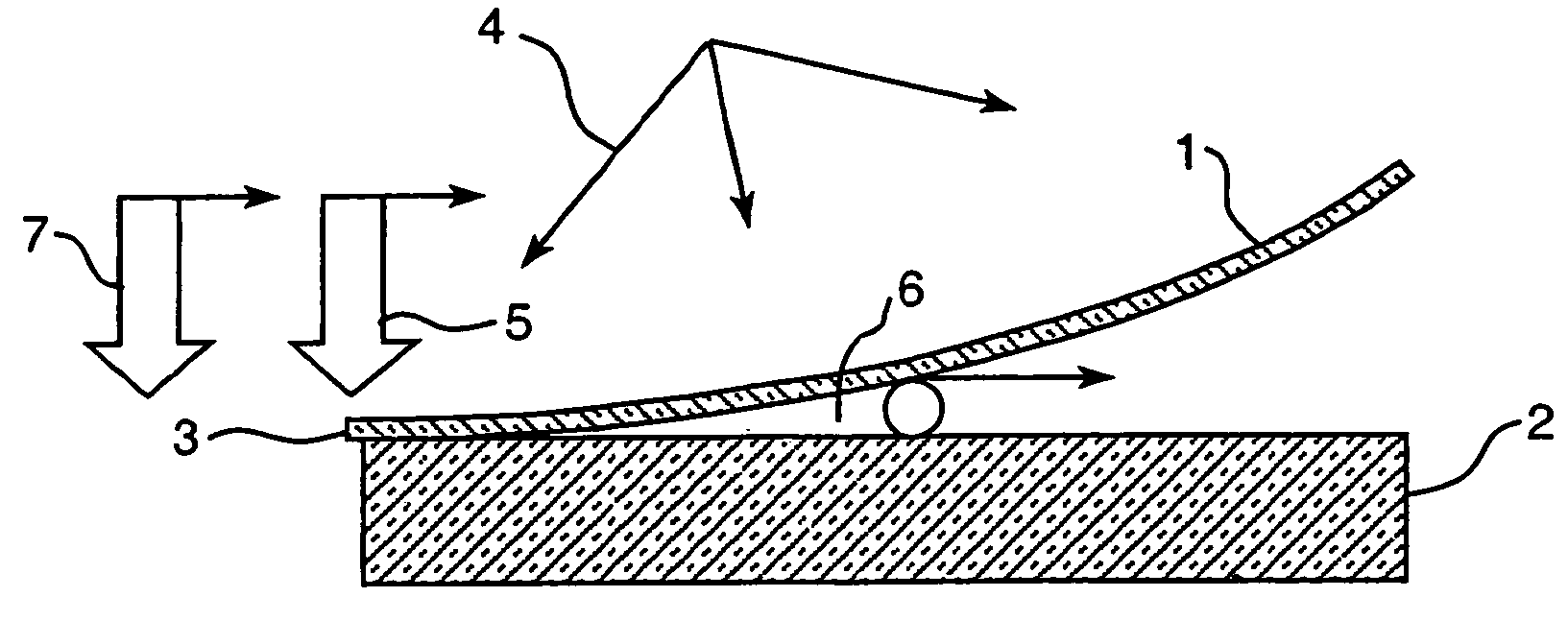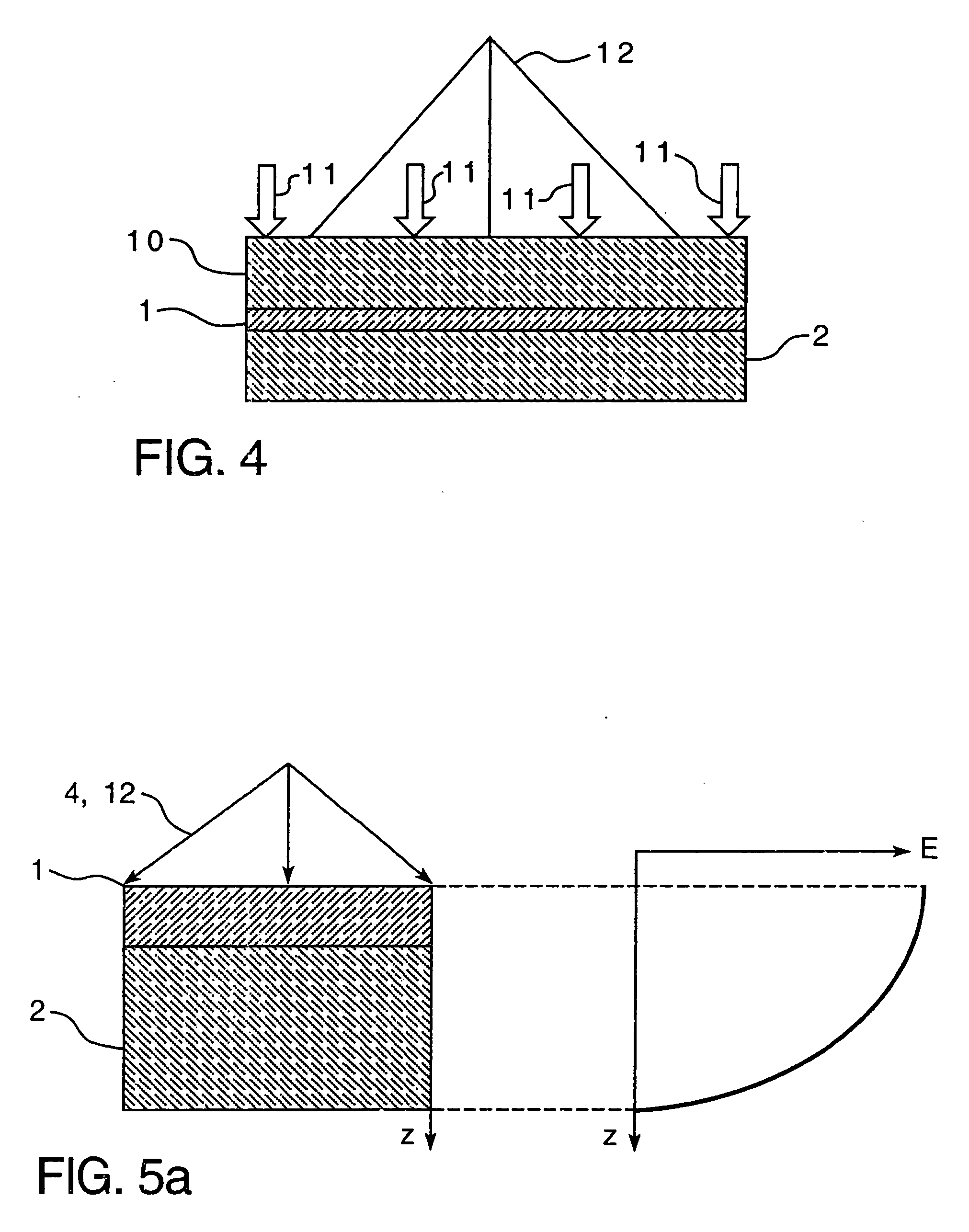Method for laminating glass sheets using short wave radiation
a technology of short wave radiation and glass sheets, applied in the field of laminating glass sheets, can solve the problems of air trapped between the film and the glass surface, affecting the quality of glass sheets, and requiring long heating and high pressure to remove the remaining air, so as to improve the heating process of the film, improve the quality of glass sheets, and reduce the effect of energy consumption
- Summary
- Abstract
- Description
- Claims
- Application Information
AI Technical Summary
Benefits of technology
Problems solved by technology
Method used
Image
Examples
Embodiment Construction
[0030] The present invention relates to a method of laminating frangible materials, preferably glass sheets, without using autoclave type furnaces to effect rapid and exclusive short wave radiation heating of the film. In the invention the laminating film (1) (see FIG. 1) is placed over the first glass sheet (2) with a gap (6) and is fixed it to one edge (3) of the glass sheet. Selected areas of the film, which can be the entire film or a selected local portion of it, are exposed to short wave radiation such as microwave and / or infrared radiation (4) which heats it to a sufficient bonding temperature. The heated film areas are successively non-stick pressed to the first glass (2) by way of a moving pressing zone (5) in a continuous manner. Pressing begins from the area where the film is fixed to edge (3) in a direction toward the opposite edge. The ability to successively and continuously press the rapidly heated film area in combination with the ability to maintain a gap (6) betwee...
PUM
| Property | Measurement | Unit |
|---|---|---|
| Pressure | aaaaa | aaaaa |
| Frequency | aaaaa | aaaaa |
| Temperature | aaaaa | aaaaa |
Abstract
Description
Claims
Application Information
 Login to View More
Login to View More - R&D
- Intellectual Property
- Life Sciences
- Materials
- Tech Scout
- Unparalleled Data Quality
- Higher Quality Content
- 60% Fewer Hallucinations
Browse by: Latest US Patents, China's latest patents, Technical Efficacy Thesaurus, Application Domain, Technology Topic, Popular Technical Reports.
© 2025 PatSnap. All rights reserved.Legal|Privacy policy|Modern Slavery Act Transparency Statement|Sitemap|About US| Contact US: help@patsnap.com



